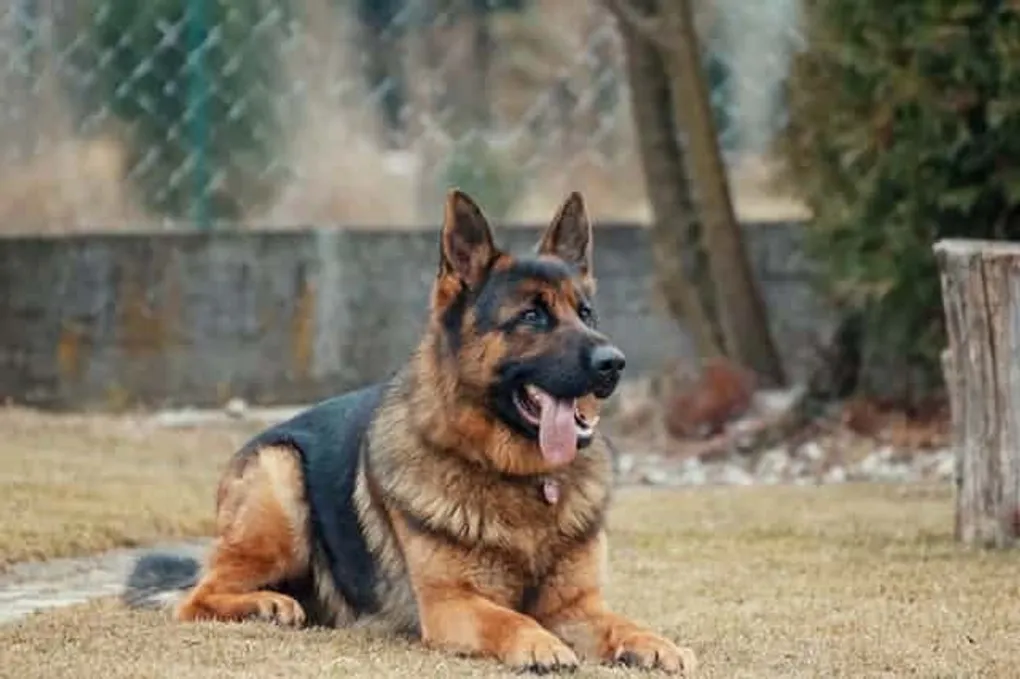
You may be familiar with the delicious food and beautiful landscape of Germany. This European country is comprised of 16 states and has 9 neighbors. Not only that, but Germany is home to over 20 breeds of dogs that originated from its land. Many of these German dog breeds are very popular all throughout the world today.
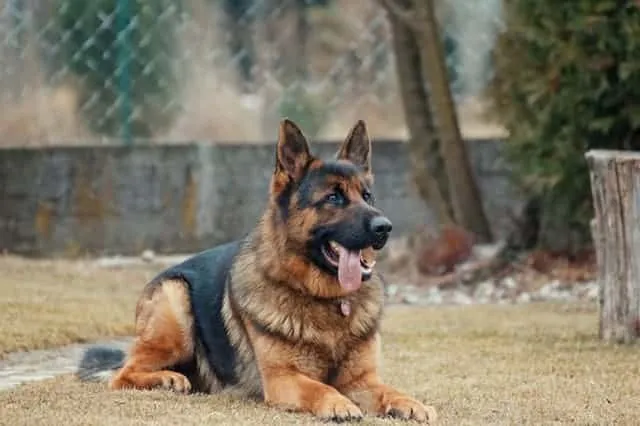
German Shepherds
German Shepherds
With the word German in its name, you have likely assumed this breed originated in the country of Germany. Although some have given this breed a different origin story, it has been found much like today since the 19th century.
This breed is characterized by an active, athletic, and highly intelligent manner. Police and the military often use these dogs for special operations. Many people in Germany also use these pups for guard dogs for their animal herds.
German Shepherds are relatively easy to maintain in the area of grooming. However, due to their energy level and brain capabilities, these dogs need plenty of exercise, training, and food.
These dog food for German Shepherds would ensure that they stay in the best of health. They often get along well with people and make loyal companions.
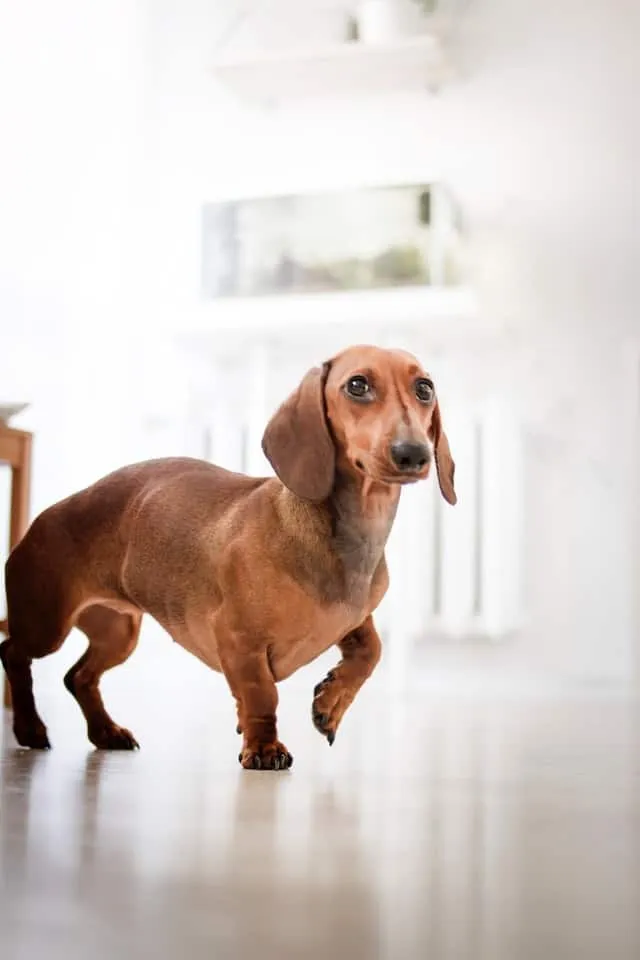
Dachshund
Dachshund
Another common breed throughout many parts of the world, the dachshund is an old German dog breed. They have sometimes been nicknamed the “German Sausage” due to their body’s narrow shape. Cross-breeding has created several variations of this small breed.
Dachshunds are often very lively and feel very loyal to the family. It is best to socialize these small dogs at an early age. These small pups often feel very brave and tend to make that well known even to larger dogs.
Due to their small size, dachshunds make great pets if you live in apartments or small spaces. They do require a good deal of training to ensure they do not exert their dominance towards others aggressively.
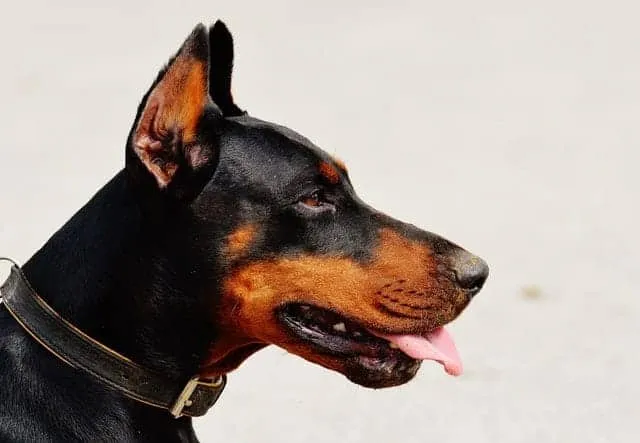
Doberman
Doberman
Dobermans are iconic watchdogs that were developed in the late 19th century in Germany. This large, sturdy breed often has a black coat with a cropped tail and ears. These dogs are sometimes used by police and military forces thanks to their excellent sense of smell.
These dogs are easy to groom but do require an experienced dog owner to train. They often are reluctant or aggressive towards strangers and don’t have much patience for children. They can get along with other pets if they are socialized at a young age.
This breed loves to be outside and is highly active. It also bonds very strongly with its family but will be completely loyal to one person. It is important to train these dogs with a gentle but firm technique to avoid the pups from being dangerous. This is important because these dogs can grow up to around 80 pounds.
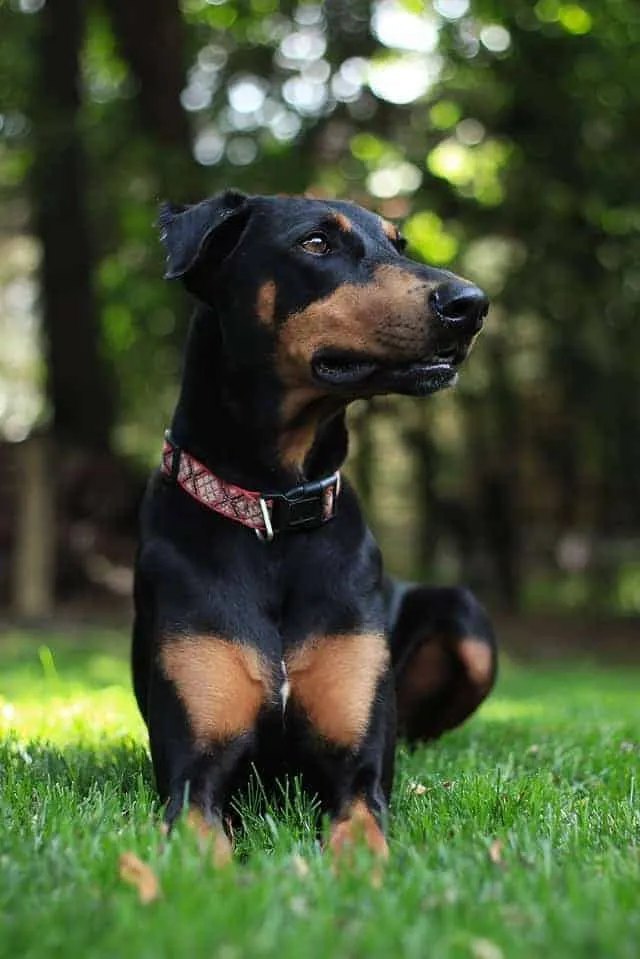
German Pinscher
A medium-sized German breed, the German Pinscher, was first considered a breed in the year 1879. The pinscher is responsible for the development of several other breeds, including Dobermans. This breed has an elegant look and was one of the first German breeds to take part in a dog show.
German Pinschers prefer to be outside and flourish when they have plenty of exercise. Pinschers are relatively easy to train with gentle and firm guidance. These pups are also fast learners and enjoy playing dog sports.
One thing to consider with these dogs is that they often bark at strangers and take a bit of time to settle down. However, pinschers are very loyal to their owners and are very affectionate with their family.
German Pinschers can grow up to around 35 pounds, but you can also find a smaller version of the breed in the Miniature Pinscher. This smaller breed only grows to about 13 pounds and may do better in smaller spaces such as apartments. However, these pups also do best when they receive ample exercise.

Pomeranian
Pomeranian
Originally coming from the German Spitz breed, the Pomeranian gets its name from the corresponding area in Central Europe. This breed became very popular when Queen Victoria took an interest in this small dog in the 18th century.
This small breed dog only weighs around 5 pounds even with its double layers soft, fluffy fur coat. They are often brown, white, or black and have small ears that sit erect at the top of their heads. Even with all the fur on their bodies, you only need to brush a Pomeranian every three weeks to keep their coat looking nice.
Pomeranians have a moderate level of activity, making them a good pet even for apartment living. Their personality is cheerful and noisy and sometimes characterized by an over-confidence with bigger dogs. These pups can be rather noisy. Consistent training for barking is important, so they don’t become too noisy in your home.
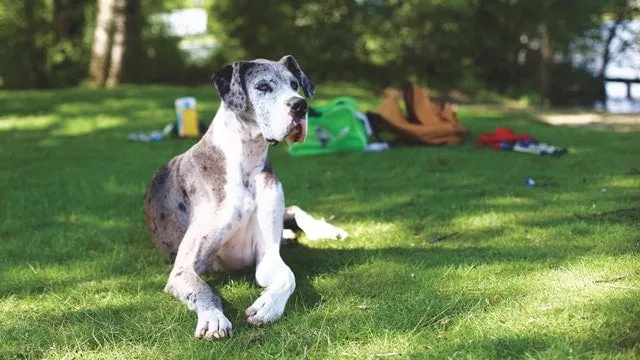
Great Dane
Great Dane
Weighing above 100 pounds, the Great Dane is a large-breed dog and one of the German Dog Breeds. It was declared Germany’s national breed in 1876. There are several different opinions on the exact breeding origin of the Great Dane.
Great Danes are low maintenance in grooming but do need special care as they grow because they often grow very quickly. If you do not take special precautions, they can gain problems with their bones, joints, or muscles.
Although these dogs may look intimidating, they have a very calm and sensitive demeanor. They are watchful and brilliant and tend to get along well with other dogs. Great Danes are very loyal to one owner but are devoted to their family and close family friends. It is important not to alienate a Great Dane in their adult life.
This breed does require a lot of space due to its large size. It adapts well inside as long as it has daily exercise and space to be in large areas. It is important to train a Great Dane at an early age, especially for positive leash walking behavior. However, this breed is easy to train due to its high intelligence and eagerness to please its master.
Summary
Germany is home to many popular German Dog Breeds, including some included in our list here.
It is always important to understand a breed before choosing to own or interact with that dog.